Lamborghini already builds some of the most extreme cars you can drive on the road today, but its vision for the hypercar of tomorrow is on a whole new level.
With the help of lab-coated boffins at the Massachusetts Institute of Technology (MIT) in Boston, the Italian supercar-maker has created a concept that's powered by electric supercapacitators instead of conventional batteries, has motors fitted at each wheel that glow as you drive and uses self-healing body panels.
It's called the Terzo Millennio, which translates to 'third millennium'. But it won't be coming to a road near you just yet; that will only happen when Lamborghini works out how to make an electric powertrain roar like a V12 engine.
Just how high-tech is Lamborghini's zero-emissions hypercar of the future?
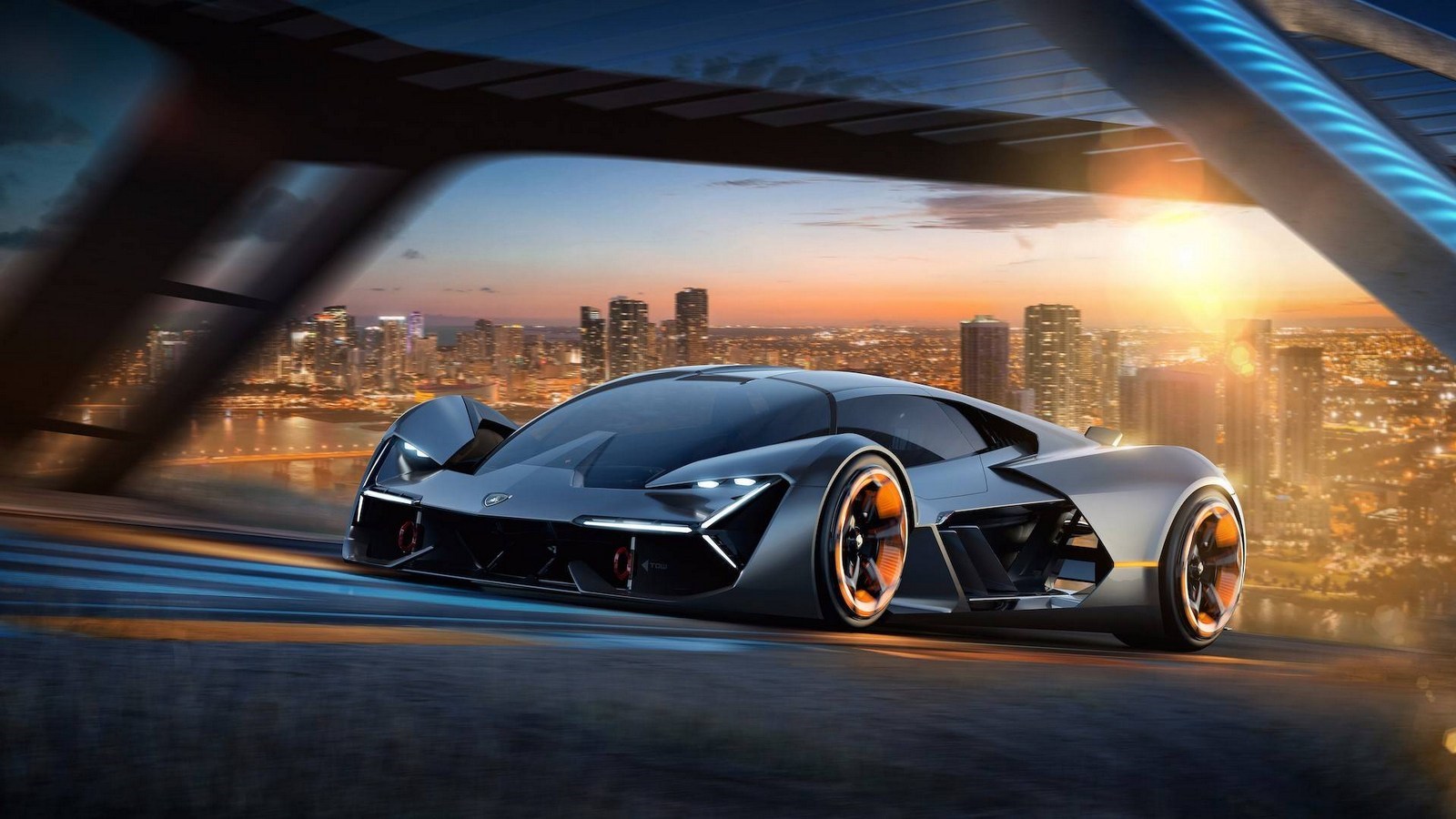
It's so advanced that it was first unveiled to a room full of scientists at MIT's EmTech conference this week after a year-long development programme with the American university.
And even those in attendance would have been baffled by some of the next-generation features, not least the self-healing bodywork.
Lamborghini has fitted the car with sensors to detect cracks and dents in the panels and the carbon fibre composite material can then fix them automatically.
That means you won't ever have to worry again about clipping a high kerb with a bumper or finding that another driver has clobbered their car door into yours - bodyshop owners everywhere may feel a cold chill up the back of their neck imagining that.
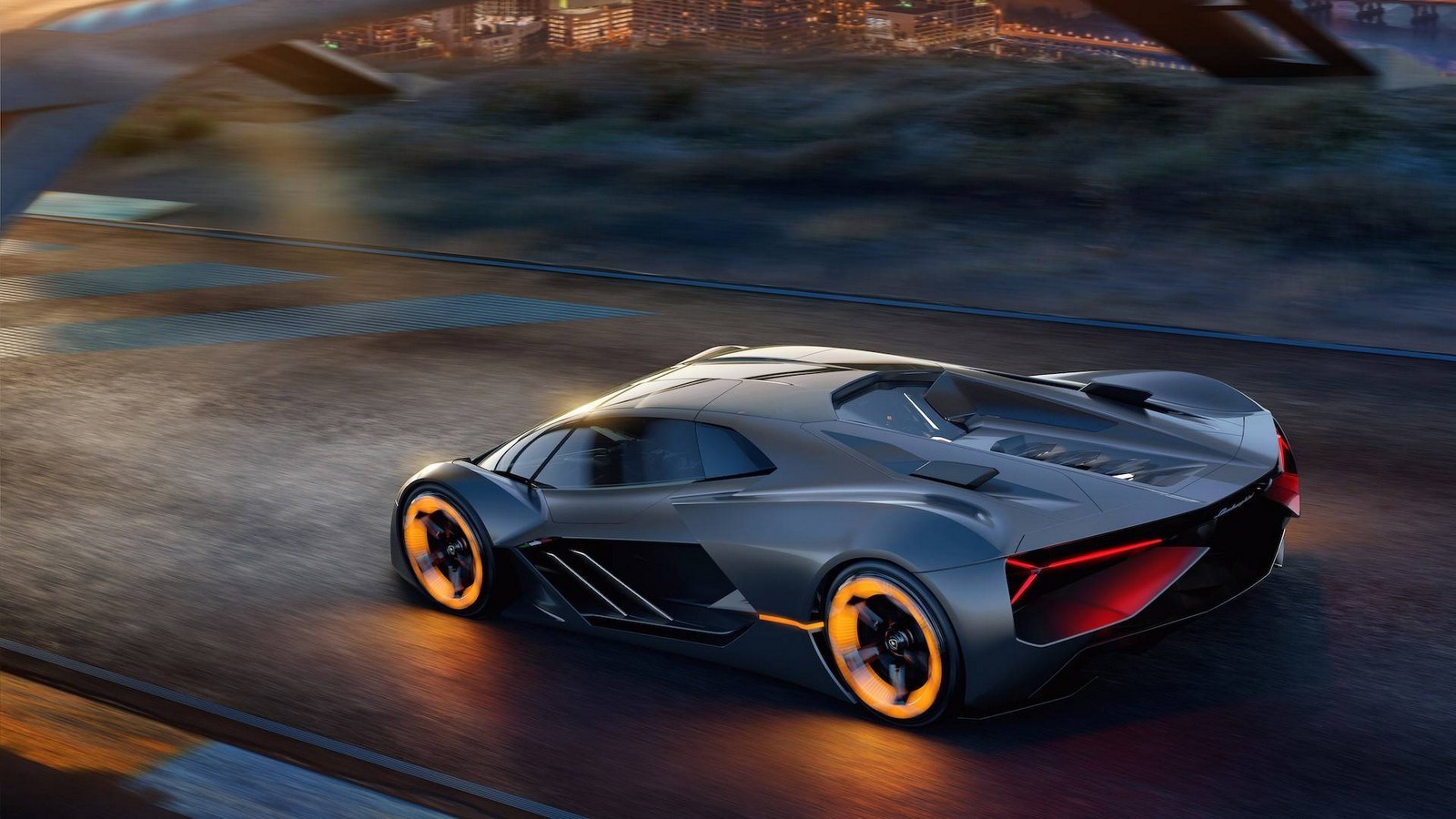
But being able to repair a ding in a panel isn't the only mind-boggling attribute of the Terzo Millennio.
Instead of using batteries, this zero-emissions concept is powered by electric supercapacitors currently used in smaller car components.
What are they, we hear you ask. In short, they're high-capacity capacitors that can store 10 to 100 times more energy than electrolytic capacitors. They charge quicker than batteries and last longer after repeated charges.
That means very good things for cars of the future, suggesting more performance, a longer range, shorter charge times and less anxiety about how long the batteries will last for.
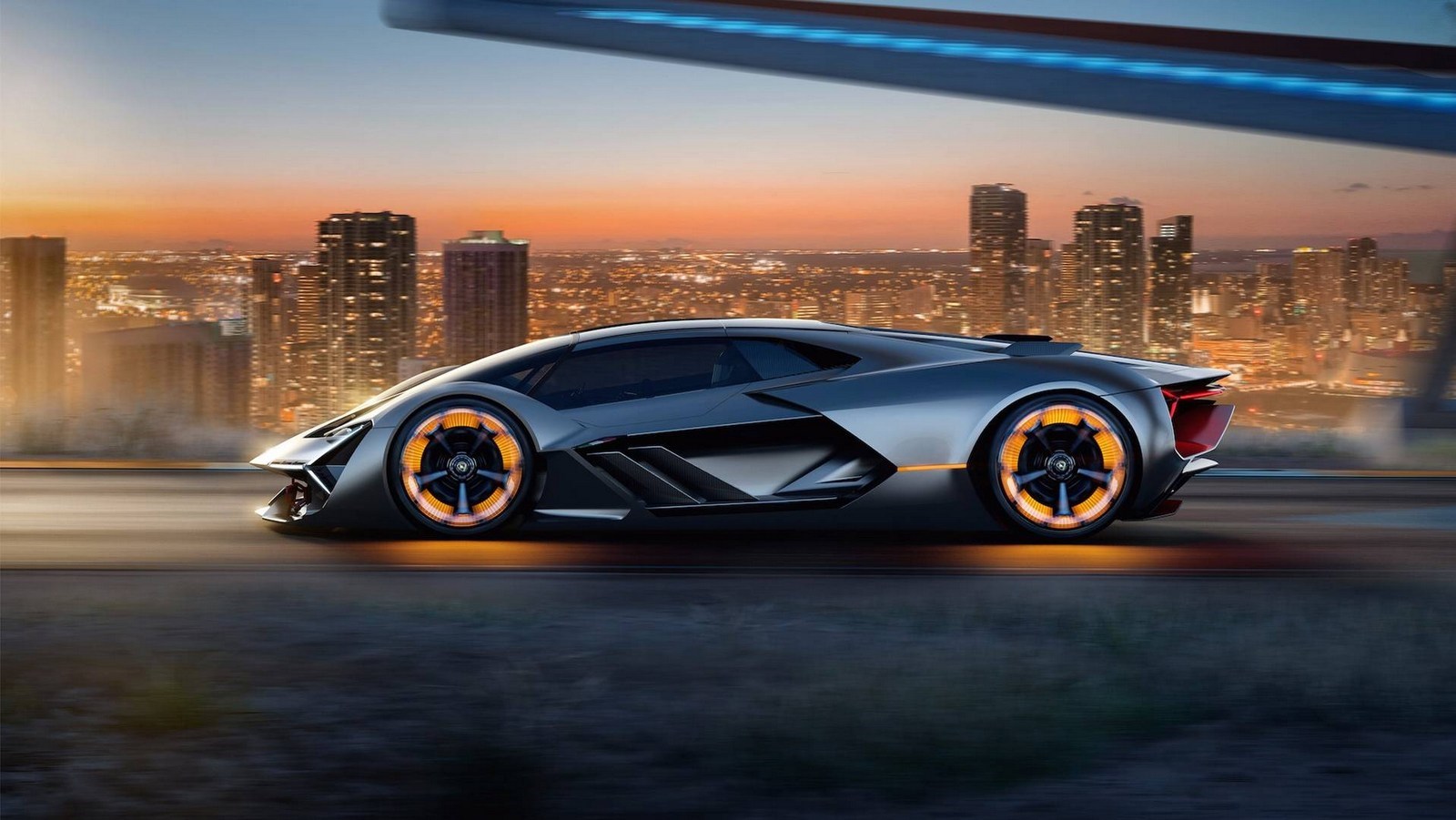
But don't start getting excited just yet - Lamborghini didn't provide a single figure to back-up the switch to supercapacitors and admitted that the technology isn't quite ready to be used as a vehicle power supply anytime soon.
As well as rethinking the power source, the concept also takes the traditional four-wheel-drive system to the next step.
Instead of a single electric motor under the bonnet there are four integrated into each wheel of the Terzo Millennio that can regulate how much torque is being sent to each corner to make it as agile as an F1 car.
The motorised wheesl even glow bright orange when the car is being driven to add to the incredible look of the bullet-like hypercar.
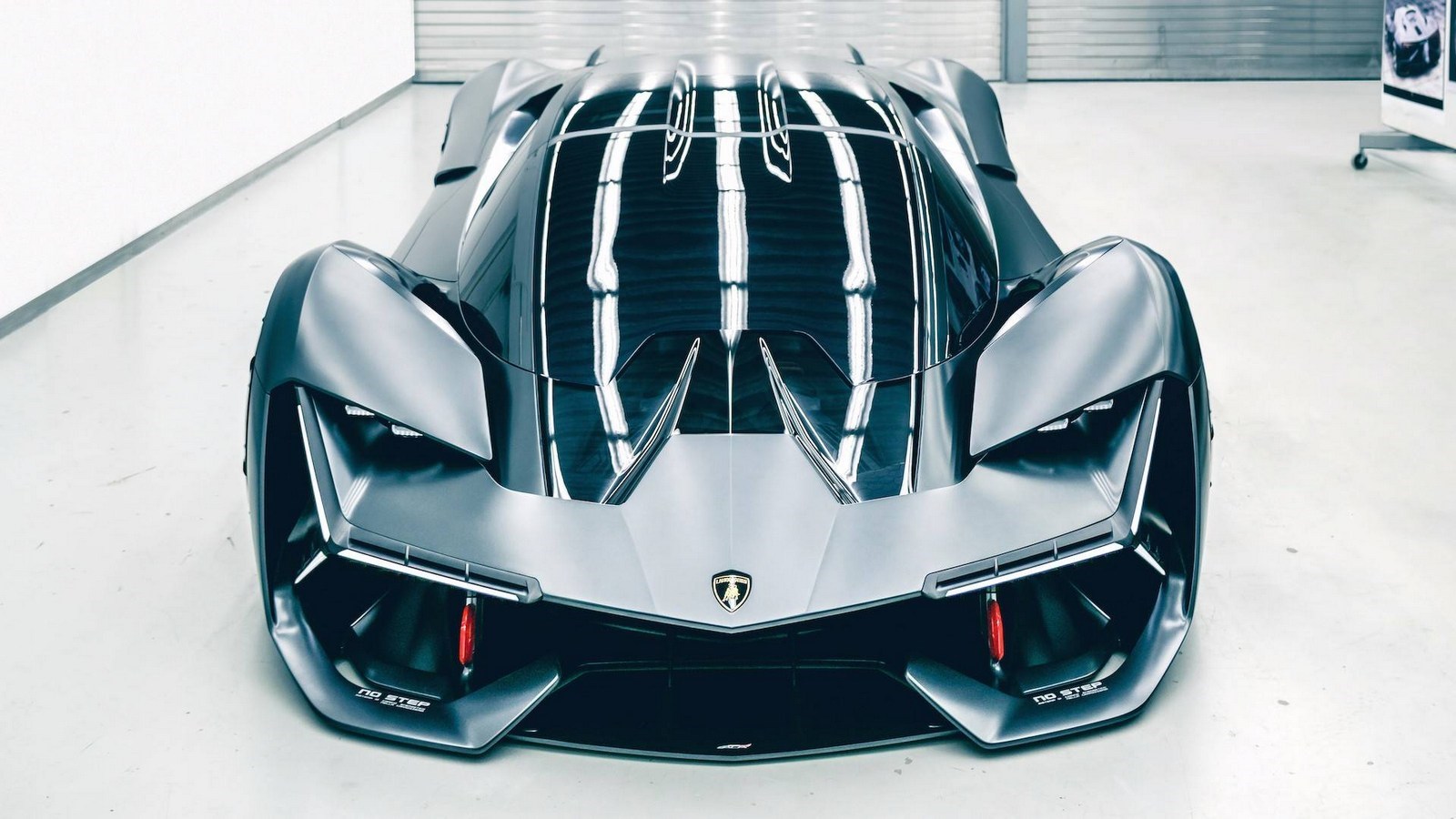
Subtle it is not, with an oval roof, gaping front intakes and a rear end that looks like it should be parked in Bruce Wayne's Batcave.
But despite the outrageous design and forward-thinking tech, there is one problem the Italian marque still faces with this and all of its electric models of the future - the sound.
Seemingly set against the faint hum of a today's EVs, Lamborghini wants its cars of the future to sound like the roaring Aventadors sold by dealers today.
'The adoption of an electric power train requires to define a sound able to substitute the one of today’s V12,' Lamborghini said.
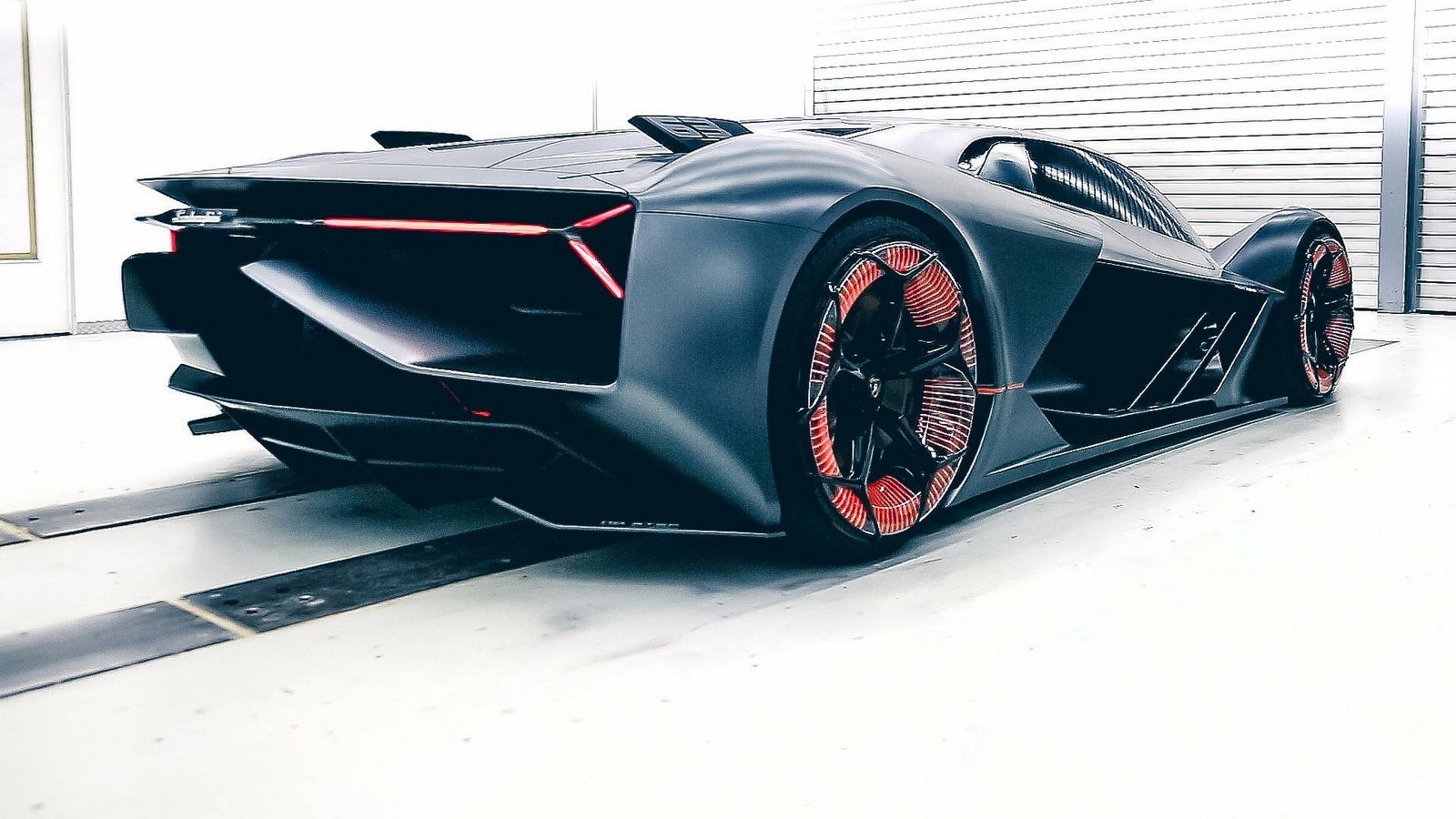
Speaking at the official unveiling,chairman Stefano Domenicali said: 'Collaborating with MIT for our R&D department is an exceptional opportunity to do what Lamborghini has always been very good at: rewriting the rules on super sports cars.
'Now we are presenting an exciting and progressive concept car. We are inspired by embracing what is impossible today to craft the realities of tomorrow: Lamborghini must always create the dreams of the next generation.'
-Daily Mail
















